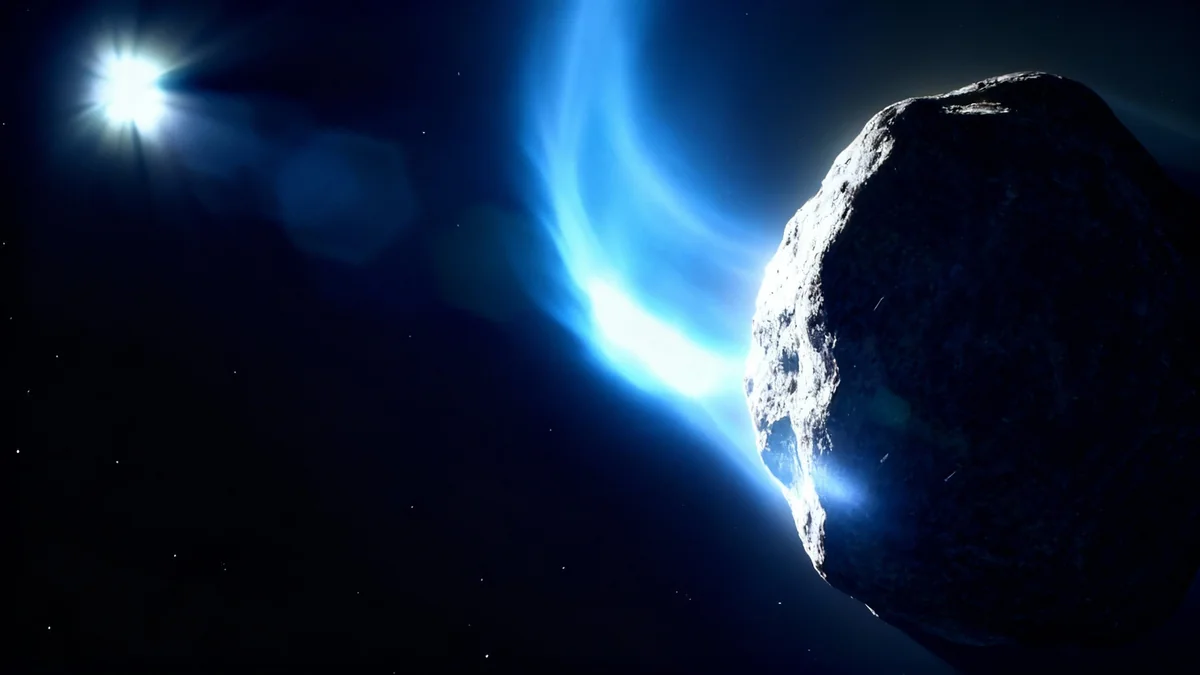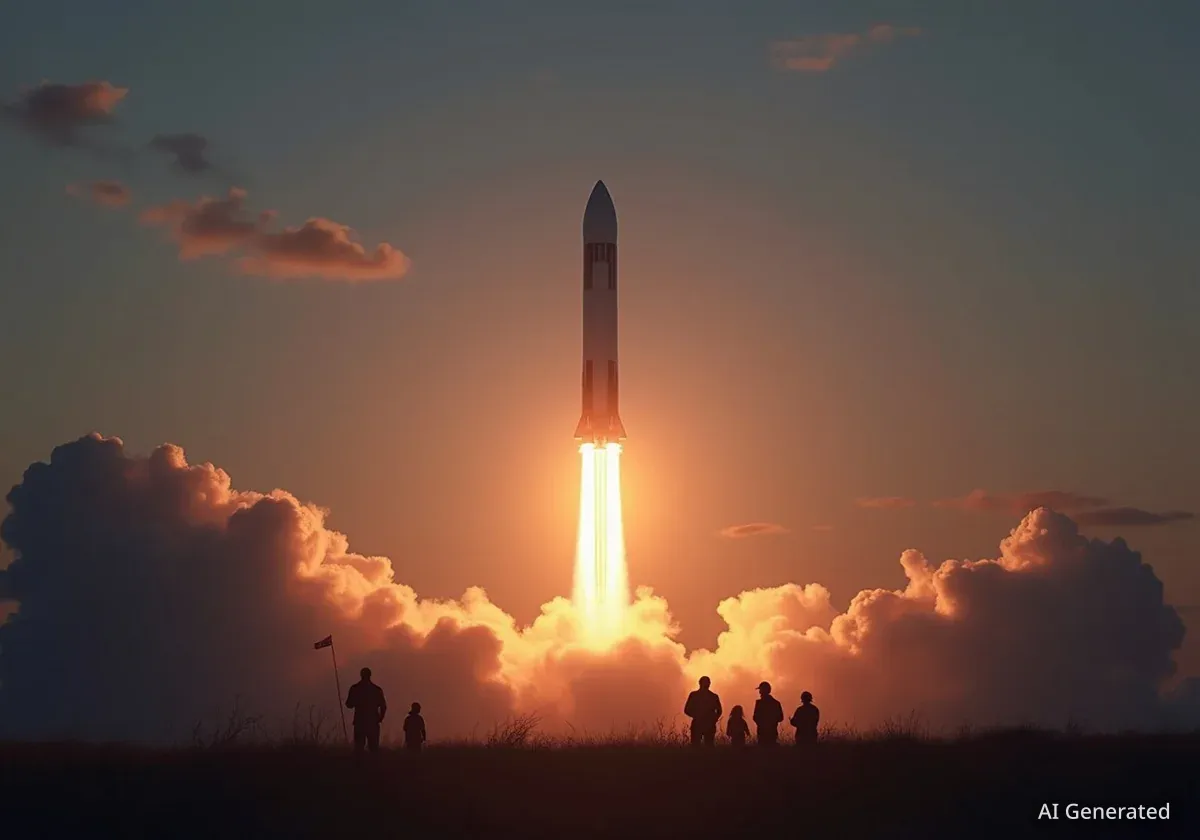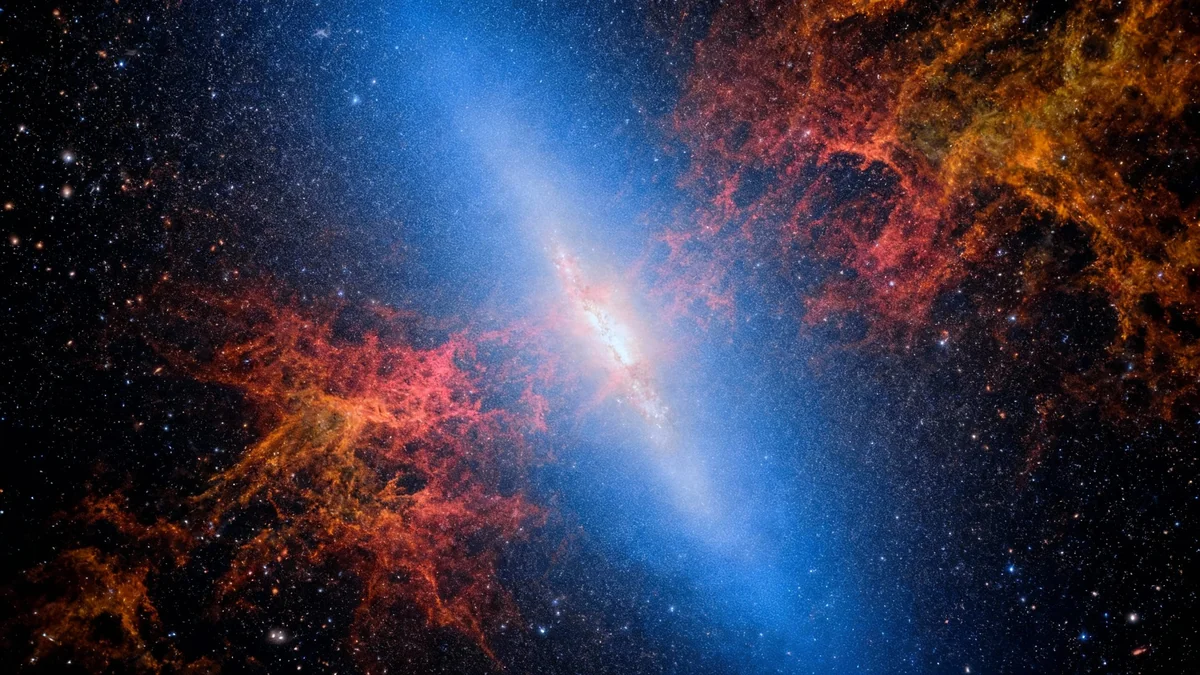A new study using a decade of radio telescope data has challenged long-held theories about the conditions in the early universe. Researchers found that the cosmos was likely warming up hundreds of millions of years after the Big Bang, ruling out the possibility of a "cold start" to one of its most transformative periods.
The findings provide new insights into the era just before the first stars and galaxies illuminated the universe, a period known as the end of the cosmic dark ages. This research was conducted by an international team using the Murchison Widefield Array telescope in Western Australia.
Key Takeaways
- New data suggests the early universe experienced a heating phase before the Epoch of Reionization.
- The theory of a "cold start" for reionization has been ruled out by the study's findings.
- This warming likely began around 800 million years after the Big Bang.
- Researchers believe X-rays from early black holes and stellar remnants were the probable cause of this heating.
- The study utilized ten years of observational data from the Murchison Widefield Array telescope.
Peering into the Cosmic Dawn
To understand the universe we see today, scientists must look back to its infancy. A critical period occurred roughly one billion years after the Big Bang, known as the Epoch of Reionization. During this time, the first stars and galaxies began to shine, their ultraviolet light stripping electrons from the neutral hydrogen atoms that filled the cosmos.
Before this great awakening, the universe was in a state referred to as the "cosmic dark ages." After cooling from the initial Big Bang, it was a vast, dark expanse of neutral gas. A key question for astrophysicists has been what the conditions were like as this dark age ended and the first light emerged.
"As the universe evolved, the gas between galaxies expands and cools, so we would expect it to be very, very cold," explained Cathryn Trott, a lead author of the study from Curtin University.
What is the Epoch of Reionization?
For hundreds of millions of years after the Big Bang, the universe was dark and filled with a fog of neutral hydrogen gas. The Epoch of Reionization marks the period when the first luminous objects—stars and quasars—formed. Their intense ultraviolet radiation spread through the cosmos, ionizing the hydrogen gas and making the universe transparent to light, as it is today.
The Search for a Faint Signal
Detecting signals from this distant past is an immense technical challenge. The faint radio waves emitted by neutral hydrogen from over 12 billion years ago are easily drowned out by the noise from closer stars, galaxies, and even human-made interference from Earth's atmosphere.
The research team used the Murchison Widefield Array (MWA), a low-frequency radio telescope specifically designed to detect these ancient signals. By analyzing ten years of data, they were able to meticulously filter out the cosmic static.
"Our measurements show that it is at least heated by a certain amount. Not by a lot, but it tells us that very cold reionization is ruled out."
The team was looking for a specific signal that neutral hydrogen would emit if the universe were extremely cold. After a decade of observation and careful data processing, they found no evidence of this signal. This absence of evidence became evidence of absence—the universe was not as cold as some theories predicted.
Data from the Outback
The Murchison Widefield Array is located in a remote, radio-quiet zone in Western Australia. This location is crucial for minimizing interference from Earth-based radio signals, allowing the telescope to listen for the faintest whispers from the early universe.
A Universe Warmed by the First Black Holes
The study's conclusion points to a different scenario: the universe was already warming up before reionization fully took hold. The researchers propose that this heating started around 800 million years after the Big Bang.
What could have caused this warming? The most likely candidates are high-energy X-rays. These would have been produced by the very first stellar remnants and early black holes that began to form in the young cosmos. These X-rays would have permeated the neutral hydrogen gas, raising its temperature before the UV light from stars began the process of reionization.
This suggests a more gradual and complex transition out of the cosmic dark ages than a simple, cold flick of a switch. It implies that even before the first stars fully lit up the sky, their predecessors were already changing the cosmic environment.
The Next Steps in Cosmic Archaeology
While the study successfully ruled out the "cold start" model, the team has not yet detected the specific signal that confirms the heating process. Finding this definitive evidence is the next major goal.
"The signal is definitely buried in there," said Ridhima Nunhokee, a co-author of the study. "It's just improving on our data, and getting more data, cleaner data, to reach it."
With ongoing improvements to telescopes like the MWA and the development of next-generation instruments, scientists are more confident than ever that they will soon isolate this signal. Doing so will provide a direct measurement of the cosmic temperature at the dawn of time, filling in another crucial piece of the puzzle of how our universe came to be.





